It was almost at the end of our North Sikkim tour when we realized that we have a couple of days in hand and we do not want to visit Gangtok and Pelling. It was then when our car driver suggested that we should visit Dzongu. The place is a Lepcha Reserve Area. Well, a reserve area for a community! If that was not intriguing enough, an unexplored mountain hamlet of Sikkim was definitely inviting. So, Dzongu it is, we decided.
“But, you need a permit to go there”, our driver said quite thoughtfully. And then looking at our exasperated faces, he was quick to add; “ You will get it at Mangan”. Soon I was busy with my phone looking for any information about Dzongu. I got a few names and contacts of homestays at Dzongu, but somehow the name ‘Tingvong’ caught my fancy. Being the decision-maker of all our trips, I decided that we will go to Tingvong.
This decision of going to Tingvong happened to be one of my best decisions, and never for a moment did we both regret coming here.
About Dzongu
Dzongu lies in the North district of Sikkim sitting cosily in between the steep mountains and the beautiful valleys just at the last piece of land before the mighty Himalayas start their reigning territory. The place is almost virgin yet untouched by commercialization and materialism inhabited by the original native population of Sikkim – the Lepchas. The territory very lovingly nurtures both the human and the natural habitation amidst the forest groves, cascading waterfalls and the demure villagers. The territory was designated as a special reserve for the Lepcha community since 1960 when Sikkim was still a kingdom ruled by Chogyal Palden Thondup Namgyal. The place perhaps remains the last place where Lepcha traditions and culture are still followed and the ancient animistic rituals are followed.

Where is Dzongu located?
Dzongu is located in North Sikkim. Dzongu, spanning over an area of about 80 sq kilometers, is divided into Lower, Middle and Upper Dzongu. The luscious Rongyang Chu (a tributary of Teesta) divides Dzongu into the northern Upper Dzongu and the southern Lower Dzongu. Administratively it falls under the Mangan subdivision.
The villages of Passingdang, Lingdem and Hee-Gyathang and a few more fall in lower Dzongu and is connected by motorable roads. Tingvong, Kusong, Sakyong, Pentong, Lingthem falls under upper Dzongu. There are motorable roads upto Lingzya. To reach the upper villages, you have to trek.
YOU MAY ALSO LIKE: 20 Photographs that will make you want to visit Sikkim
Why should you visit Dzongu?

Dzongu is all that you read about in fairy tales. Picturesque, quaint villages dot the entire region. It is a place where you will find sprightly cold rivulets on your way to the hot springs. Many nameless waterfalls seem to spring a surprise at intervals. The ubiquitous luscious green forests full of exotic flora and fauna cover the entire region. The hamlets are dotted with small traditional houses and each house boasts of a small beautiful garden.
Do you remember the picture you used to draw as a child? The one with mountains at the backdrop, a small house with gardens and flowers! Dzongu is quite like that. Colourful prayer flags with sacred hymns written on them flutter in the fragrant winds. The green expanses of the paddy and cardamom fields are pleasing to the eyes. And you will hear the sweet chirping of birds every now and then.
On a clear day, the Kanchenjunga looms over the landscape. And this pristine place is inhabited by some of the best people in the world. They are as simple and warm as nature is. If these reasons are not enough, then read on to know about the things to do at Dzongu and the awesome attractions of Dzongu later in the post.
YOU MAY ALSO LIKE: Rinchenpong, an offbeat destination in Sikkim
Entry to Dzongu
Dzongu is basically hidden away from the world by the mighty Teesta River that separates it from the rest of North Sikkim. There are two entry points into Dzongu. You have to cross the Teesta River to enter Dzongu from either side. Pheedand near Dikchu is one of the entry points into Sangtok, a village in lower Dzongu.
The other entry point is through Sankalang, located near Mangan, the district headquarters of North Sikkim. You can reach Upper Dzongu from here after crossing Passingdang village.
Earlier, Upper Dzongu was accessible from both the entry points. But after the major landslide in August 2016, the Teesta River changed its course. The river was blocked and a huge lake was formed and Upper Dzongu including Tingvong was cut off from the rest of the area. We had to cross the lake on a raft, go to the other side of the lake and take another jeep to Tingvong, Upper Dzongu.

Recent Update (2019)
The motorable roads is still unusable, but a bamboo bridge has been built over the lake. Now, instead of using the raft, you can walk over the bamboo bridge and then take the other jeep to the villages of Upper Dzongu.
YOU MAY ALSO LIKE: Martam, West Sikkim – serenity meets simplicity
Things to do in Dzongu and places to visit at Dzongu
There are lots of things to do at Dzongu. The place is blessed with immense natural beauty and landscape. The lifestyle of the Lepchas is also in communion with nature. It is a perfect place if you are seeking for peace amidst nature, a wonderful place for bird watchers and also those who have come to spend here a relaxing weekend.
-
Go for village walks
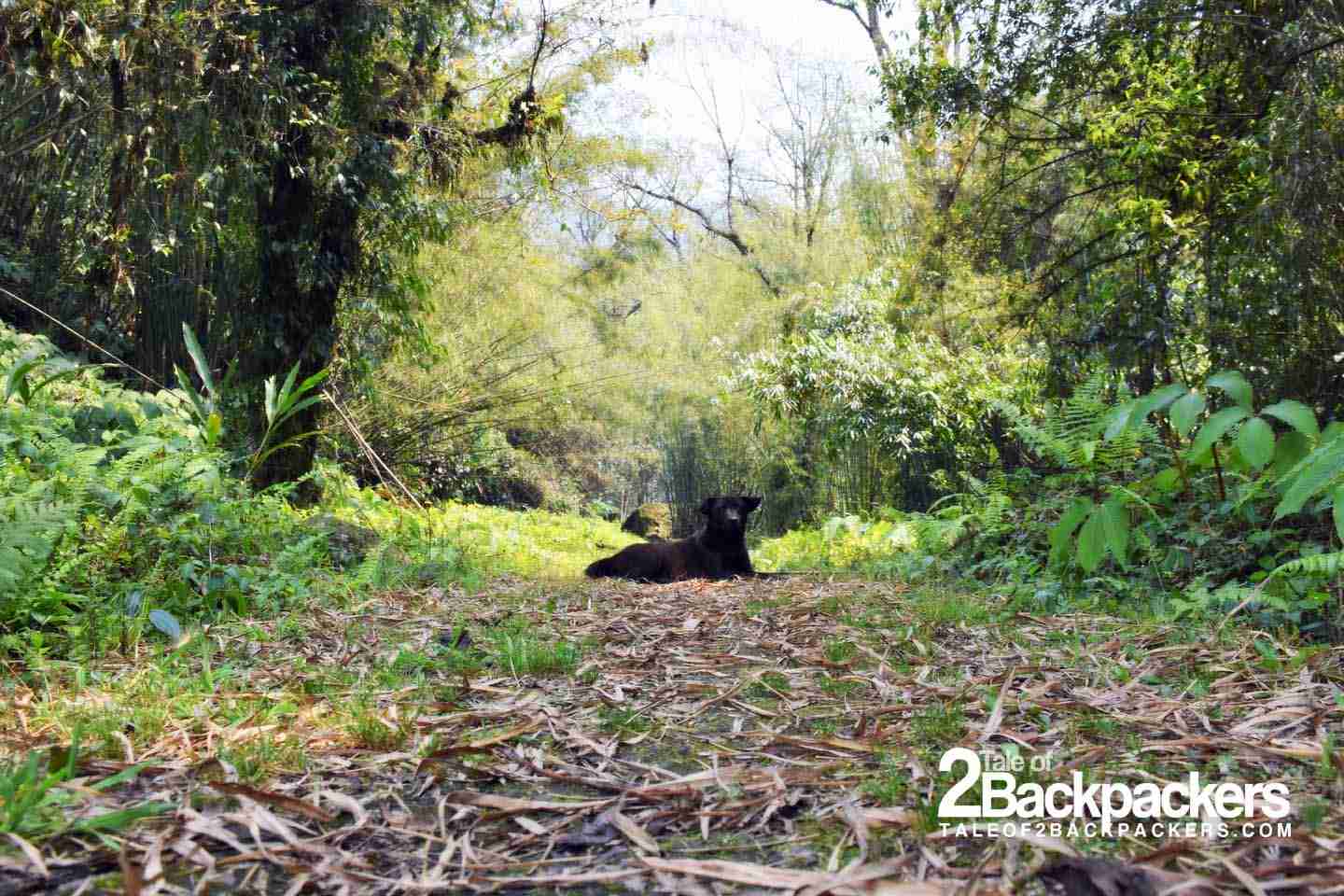
We felt that Dzongu can be best explored by taking a walk in its numerous small villages. The place seems to be frozen in time, serene and secluded. You can simply stroll around the villages taking in the fragrant smell of fresh air. The paddy and cardamom fields sway in the pleasing breeze. It might so happen that you might not see any other person in a long distance. This is the beauty of Dzongu.
You can walk through the villages of Passingdang, Tingvong, Sakyong, Lingdong and explore the traditional way of the Lepcha life. Each village has its own speciality.
Lingthem village
You can trek from Passingdang to Lingthem through the secluded bamboo groves. The village is located in the heart of a forest and has a beautiful monastery. If you visit Lingthem during December at the time of Namsoong Festival, you can see the masked dance here. It is quite similar to the Kagyed Dance that we saw in Phodong.
Hee Gyathang Village
This is a beautiful village and can be reached by jeep from Passingdang. There is a small lake in Hee Gyathang surrounded by prayer flags. There is an interesting anecdote around this lake. The local villagers believe that the lake was formed by the tears of a goddess who had fell in love with another celestial being. The Heemos clan believe if the fishes die, then their clan too will perish. Thus they guard these fishes with care. Just see, how beautifully the Lepchas share a strong bond with nature. We had seen such close bonding between men and nature among the Khasis in Meghalaya and the Galo tribe in Arunachal Pradesh.
Pentong Village

If you want to get a view of the mountains from close, then you should trek to Pentong village. It is the last inhabited village and can be reached by trekking through the forests. There are two hillocks here that provide a perfect view of the mountain ranges.
YOU MAY ALSO LIKE: Barsey – a walk among the rhododendron trail
-
Trekking
You will be spoilt for choices when it comes to trekking at Dzongu. There are a number of options catering to various difficulty levels and time constraints. The Tholung Monastery trek is a one day trek from Tingvong that will take you to the breathtakingly beautiful location of the monastery.
For the avid trekkers, there is the Keushong Valley Trek. This relatively difficult trek takes around 5 days both ways. The Keushong Lake is situated in a beautiful setting of the valley.
You can also trek to the Pentong village, the last inhabited village and in closest proximity to the mountain ranges. This is also a 1-day trek from Tingvong. The magnificent views of the Sleeping Buddha is the reward you get after completing the trek.
There are many other trek routes in the area. Just ask your host and take a guide with you to explore the joys of trekking in Dzongu.

-
Visit the traditional Lepcha Museum, Namprikdang
The traditional Lepcha Museum is actually a Lepcha house constructed over strong stone pillars. The architecture of the house is quite fascinating. The strong stone base and architecture makes it relatively safe from earthquakes and flash floods the region faces from time to time. The house is located near the Sangkalang Police checkpost at the confluence of the Teesta river and Rongyang Chu.
-
Enjoy the solitude at Lingzya or Lingzey Waterfall
The landscape of Dzongu is dotted with numerous waterfalls, but this one is the best among all. Located at Upper Lingzya village, the waterfalls is located on the way to Pentong and Sakyong. The waterfall has a drop of 300 feet and is a visual treat. The locals do fishing on the shelf of the waterfall.
-
Visit the ancient Tholung Monastery

This quaint monastery was built in the 18th century to preserve the ancient manuscripts and relics from the invading Gorkha invaders. The Tholung Monastery hoses some of the rarest Buddhist artefacts and relics. Ancient Buddhist scrolls and handwritten manuscripts are kept here in safe. Once every 3 years, the monastery opens its doors and puts on display these precious and ancient relics.
If not for its cultural significance, you will definitely fall in love with the surroundings. There is a beautiful waterfall that cascades down into a deep ravine. The Lepchas believe that the departed souls pass through the waterfall before passing on to the other world. There are a few caves around the area that are believed to be the meditating space of Guru Rinpoche. There is a traditional Lepcha hanging bridge just above the monastery.
-
Visit the hot spring
You can access the hot springs only after crossing an icy cold rivulet. Near the Lingdem village in lower Dzongu, inside the forests, you will find the sulphurous hot springs. The locals believe that the water of the spring has medicinal properties. There are two log huts there each one for either sexes.
Take a dip into the hot spring amidst such a natural setting, with the forests all around you. I am sure you will cherish this experience for a long time.
-
Marvel at the traditional bamboo bridges made by the Lepchas
These traditional bamboo bridges made by Lepchas are actually an engineering marvel. The bridges are made by long bamboo sections and can be seen in many parts of Dzongu. You can see them at Passingdang and one above the Tholung Monastery.
-
Go for birdwatching and butterfly watching
There are more than 200 species of birds and around 70 species of butterflies in Dzongu. The upper part of Dzongu hills have snow-clad mountains, moraines, alpine lakes and meadows. The lower part of Dzongu too blessed with immense biodiversity. With fewer vehicles and lesser human activities, our winged friends have a better time at Dzongu. Birdwatching and butterfly watching is something that you will absolutely enjoy here.
Our Dzongu experience

After my research about the place, I got the contact number of Dupden, the one who has the homestay at Tingvong. He assured us that permit will be not a problem and he will arrange it for us. So, we gave all our thoughts rest and after a very enchanting trip of Gurudongmar and Yumthang, we started our way back towards Mangan. We reached Mangan at about 2 PM. Dupden told us to take the local jeep to Tingvong.
Tingvong is located on the upper Dzongu. From Mangan, we took a shared jeep that took us on a bumpy one hour ride on a winding road. As we got down from the jeep, we saw a huge artificial lake in front of us. We crossed the lake to go to the other side and then another jeep ride will take us to Tingvong village.

We were asked to take off our shoes and wear slippers. There was a raft where we boarded. Many locals also got into the raft and there we started rowing towards the other side. Even for their basic needs, they have to cross the lake on a raft. Dupden later told us that they even carry gas cylinders and refrigerators on the raft to the other side. We crossed the lake by a raft , took another jeep and after another ride for 30 minutes, we were at Tingvong village in front of Dupden’s house, our homestay.
Dupden is a nice and friendly man and the most striking feature was his long thin beard. Since it was almost evening, we freshened up and then Dupden offered us Chee.
Chee is a local alcoholic drink served in a big bamboo glass along with a bamboo pipe. Chee is made from millet by fermenting it for days. The hostess served us a pork dish that tasted like heaven. And then we continued our chit-chat with Dupden and his family. We never felt that we were away from family!
The Lepcha Schedule

The Lepchas follow a schedule that can be quite a shocker for the urban people.
They have a different habit from ours. They have a very early breakfast within 7 AM and have their lunch within 10.00 AM. Again, dinner is served with 7 PM. And the best part is that they do not change this routine even for the guests. While at the homestay, you have to stay as the locals do. If you are hungry in the afternoon, because of your usual routine, then they will prepare you snacks or Maggi. We had a perfect and delicious Lepcha lunch and then went out for a hike of the village.
The next morning was beautiful with fresh air coming with the blessings of Mt. Kanchenjungha. The Lepchas consider the mountain as their guardian deity.
The beautiful School

We took the uphill road towards the monastery. We passed the Tingvong School on the way. That day there was a function going on at the school. One of the teachers got transferred and so the students were giving farewell to him. Students dressed in colourful attire ran here and there. Dupden took us to the school where we met the Principal. He is a man from Kerala and is running the school for 12 years! Just imagine, a person from such a far land is the Principal of such a school. And all the villagers love him so much.
Dupden is a skilled archer. He displayed his skill of archery to us. We could see how the little kids were following him and impersonating him. Dupden is famous around this area!
After a visit to the school, we went towards the monastery. The monastery was closed, as there was a function at the school. All were there. After a visit to the monastery, we walked down the hilly path and along the fields and reached the Kusong village. Kusong is the highest village in the Dzongu region. Most of the people here are into agriculture and they mainly grow cardamom along with other vegetable crops. We walked through the village and took a round route and reached back at Dupden’s homestay.
We had a time crunch and so could not visit the other places of Dzongu. There are hot spring and some beautiful waterfalls around the area. Before the landslide when Tingvong was well connected, it was easy to visit those places by hiring a car. Now, we have to cross the lake and then take a car from the other side to visit those places. We missed the hot spring and the waterfall at Lingzey, but whatever we experienced in these 2 days were something we would cherish forever.

How to reach Dzongu?
Dzongu is 70 km from Gangtok. To reach here, you can take a shared vehicle from Gangtok to Mangan.
If you are coming from Siliguri, then, you can take a vehicle to Singtam and from there come to Mangan. You will get shared jeeps to Mangan from the Vajra Taxi Stand (North Sikkim Taxi Stand) in Gangtok.
From Mangan taxi stand, shared jeeps are available to Dzongu. Do remember, that the last jeep to Dzongu leaves from Mangan at around 3 PM. After that, you will not get any shared vehicle.
For the first time visitors, you can ask your homestay owner to arrange a pick-up. It usually costs around INR 1200 from Mangan to Tingvong in upper Dzongu in 2 vehicles.
If you are coming from Siliguri, you do not necessarily have to travel via Gangtok. You can take a shared jeep from Siliguri SNT stand to Singtham. From Singtham, you will get another shared jeep to Mangan and henceforth to Dzongu. The distance between Siliguri to Dzongu is about 145 km and will take upto 5-6 hours.
Private cars are also available to Mangan from Siliguri or NJP. It usually takes around INR 4000 for a Siliguri to Mangan drop.

Is Permit required for Dzongu?
Dzongu is a Lepcha Reserve Area. Anyone who is not of Lepcha ethnicity requires a permit to enter Dzongu area. The permit can be obtained from the DC Office at Mangan. Otherwise, you can send a scanned copy of a valid ID and address proof along with a passport size photograph to the homestay owner. He can arrange the permit easily. A permit usually costs INR 150 per person.
Best time to visit Dzongu

Dzongu can be visited throughout the year. But the best time would be late winters (end of February), spring (March-April) and the summer season (May to early June). During this time the weather remains cool and pleasant and you can also sight a number of birds.
The monsoon season between June to September should be best avoided. Landslides are common in the area during the monsoon season. The weather too remains foggy and there is very less chance of seeing the mountain ranges. But there will be lush greenery all around and the waterfalls will be spectacular.
Autumn and winters (October to January) are also good times to visit Dzongu as you will get a clear view of the mountain peaks. But the weather will be quite chilly and you have to carry sufficient woollens with you during this time.
YOU MAY ALSO LIKE: Pang Lhabsol and the tale of the Blood Brotherhood
Places to stay in Dzongu
There are homestays at Tingvong, Passingdang and Lingdong village. There are no hotels in Dzongu. It is better this way. Staying at a homestay also brings us closer to the Lepcha way of life. We stayed at Dupden’s homestay at Tingvong.
Here is a list of Homestays at Dzongu with contact numbers
| Mayal Lang Homestay
Owner: Mr. Gyatso Lepcha Passingdang Village, Lower Dzongu Contact: 9434446088, 9647872434, 9002884972 Email: gyatso@mayallyang.com
|
Dzongu Lee Homestay
Owner: Sonam Lepcha Lingdong Village, Dzongu Contact: 9609864255 Email: dzongulee79@yahoo.com
|
| Lingthem Lyang Homestay
Owner: Sangdup Lepcha Lingthem Village, Upper Dzongu Contact: 9593781926, 8436000318 Email: lingthemlyang@gmail.com |
Tingvong Homestay
Owner: Dupden Lepcha Tingvong Village, Dzongu Contact: 9800254465, 9593783043 Email: sherapl@rediffmail.com |
| TECS Homestay
Owner: Ongtshering Lepcha Tingvong Village, Dzongu Contact: 9434174856 Email: otpakimu@yahoo.co.in |
Rumlyang Homestay
Owner: Karma Lepcha Tingvong Village, Dzongu Contact: 8768322211, 7407345281 |
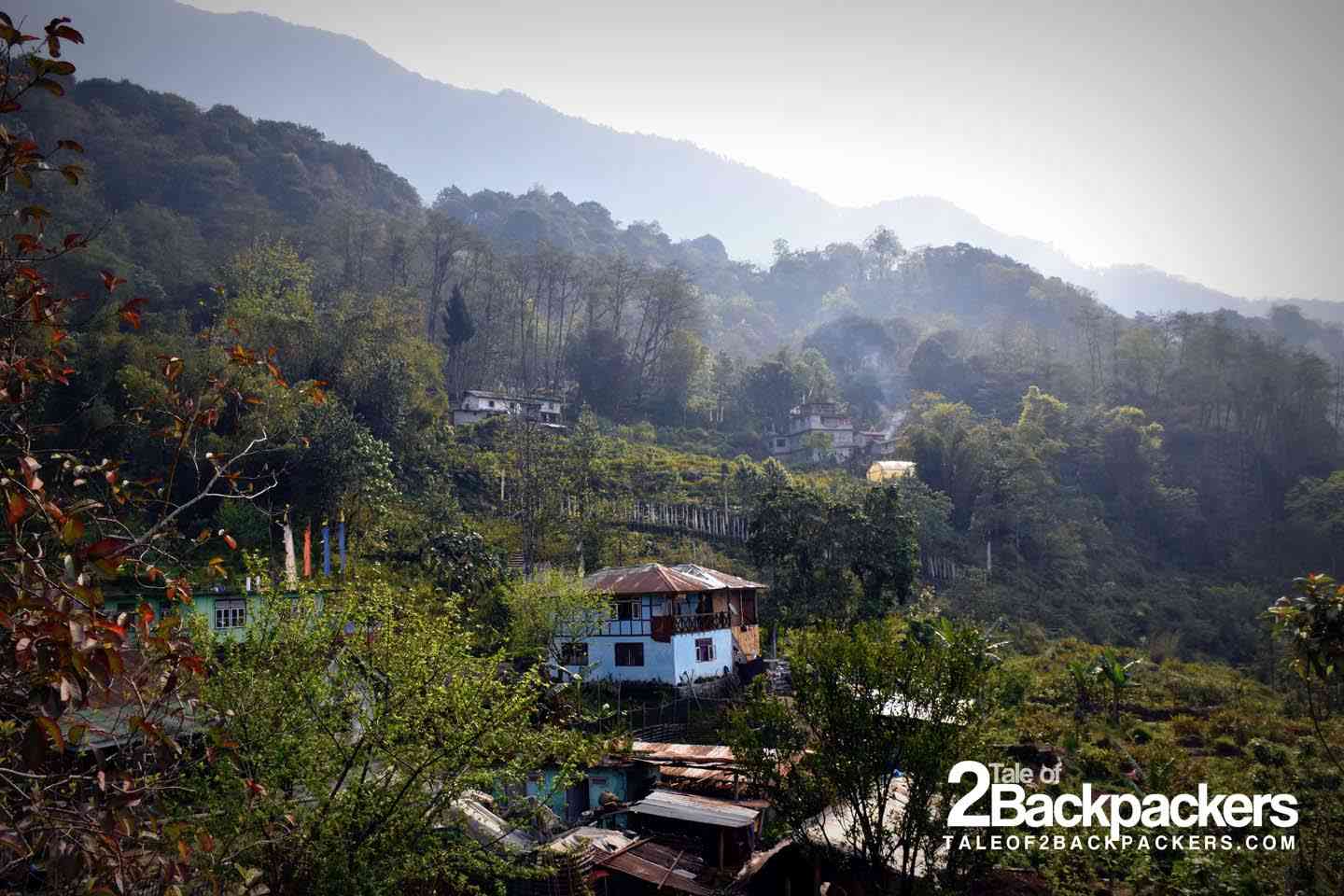
Sikkim has always been kind to us. But being in Dzongu was altogether a different affair. The visit to Tingvong village by crossing the lake was also something we did not anticipate. The pure air of the village along with the green fields and the fluttering prayer flags were the best things that we experienced.
The local Lepchas believe that the upcoming Hydel Projects on Teesta River are causing harm to their natural habitat and disintegrating the fragile ecosystem of the place. This has led to a few skirmishes between the locals and the authorities. The Lepchas value and respect nature and do not want any compromise in the natural ecology of the place.
Even as the artificial lake was created, the inhabitants of Upper Dzongu consider the lake to be sacred. Dupden told us how their people think that the lake is a blessing from nature inspite of the difficulties it creates in their daily life.
But geographically, the block that has been created on the river will break one day. And then the water of the lake will flow in full force and will wash away the lower villages. It would be something like what happened at flash flood at Kedarnath
Did you like the post? Please show your love by sharing and commenting. Pin it for a later read!

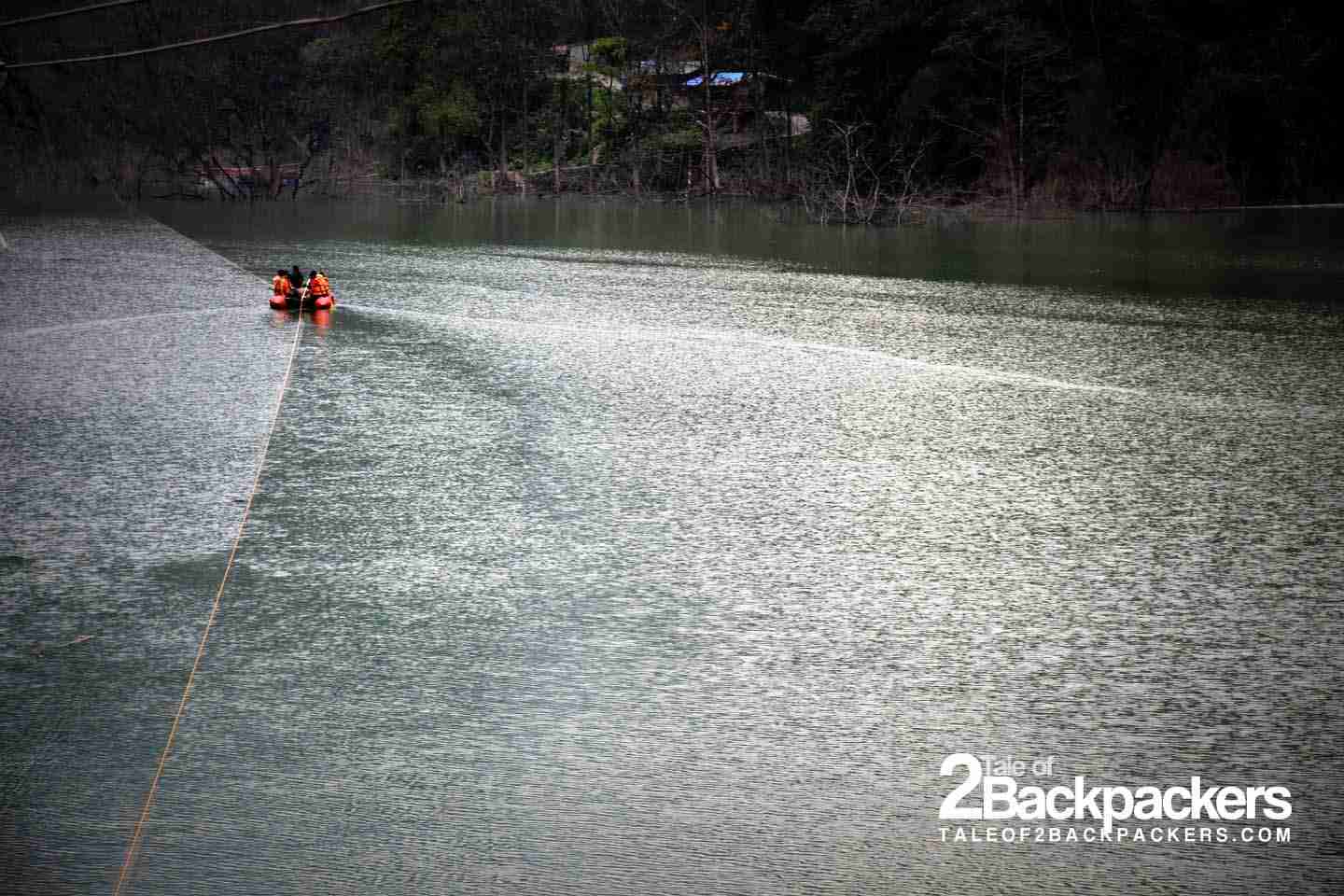

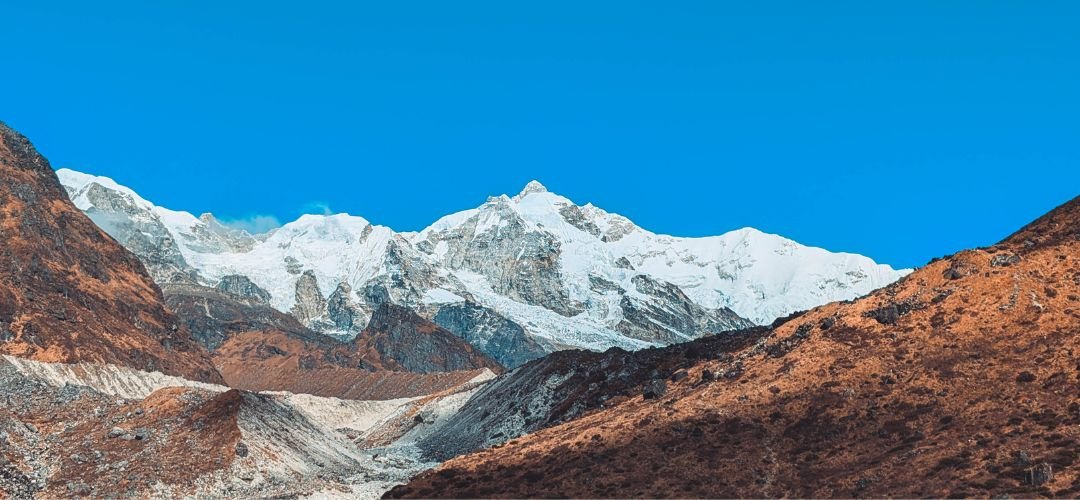


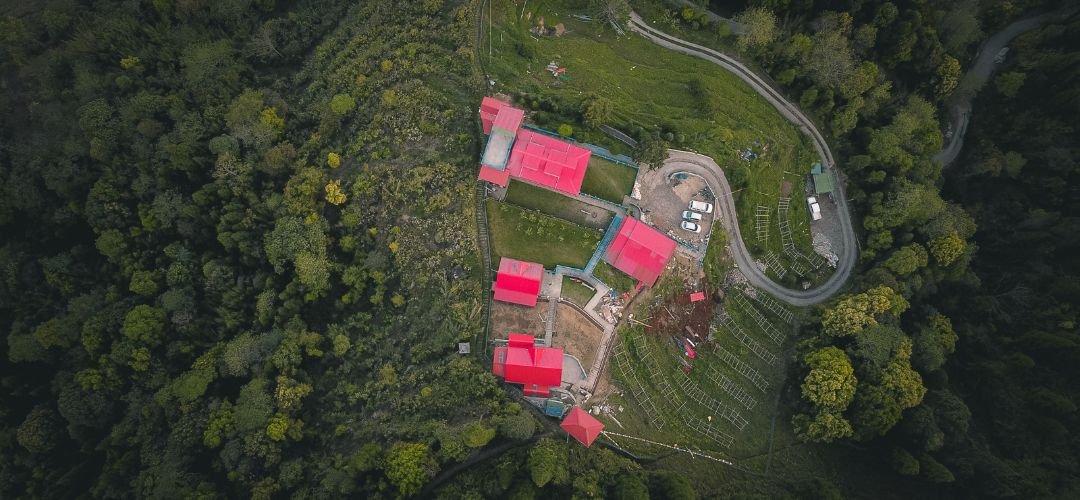

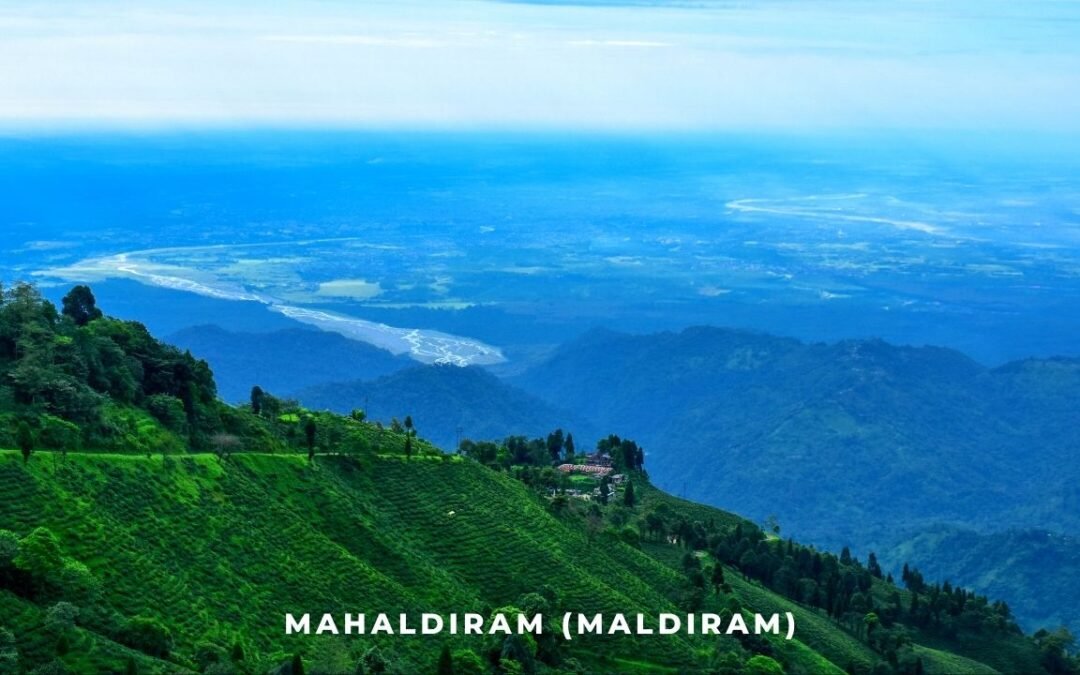
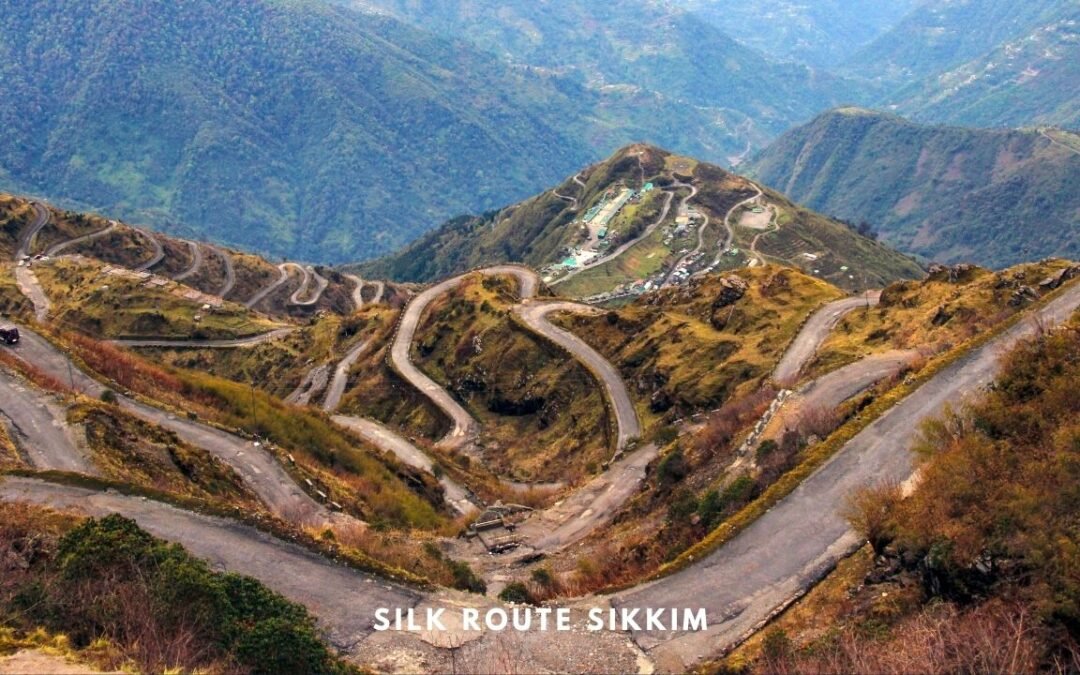
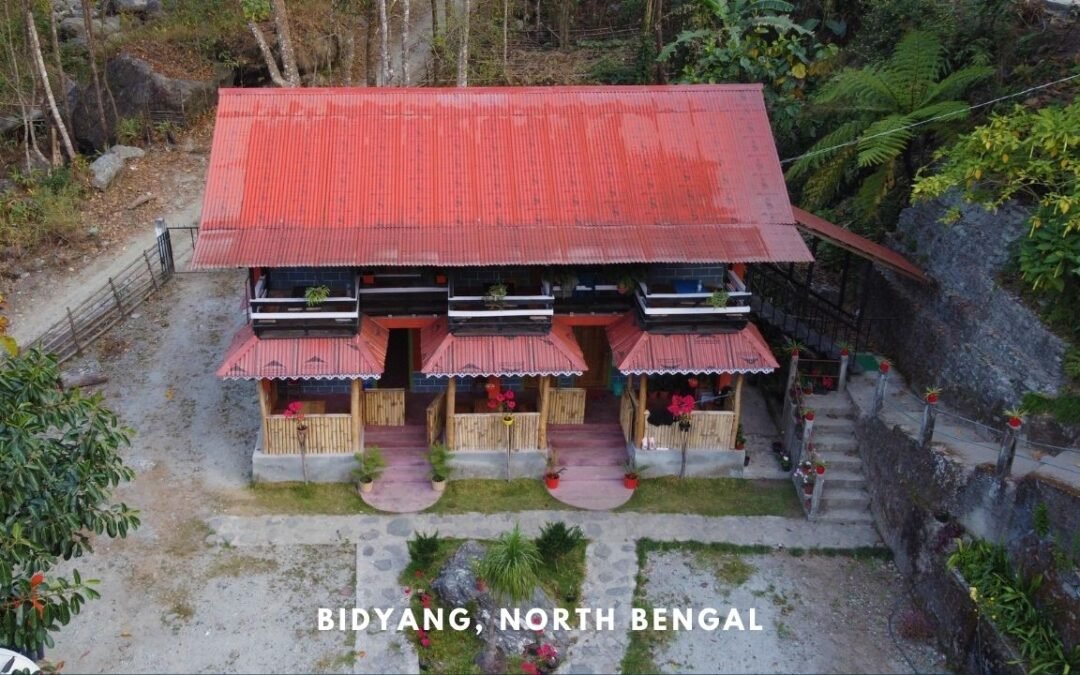
Lovely post. Will add this to my bucket list when I visit NE next time
Thank you… Dzongu is indeed a wonderful place!
There is no doubt that places out of the beaten path give you more authentic experiences. And staying at homestays not only you support the families but have true local experience.
Looks like a stunning area to visit-I love getting off the beaten path and seeing how locals in such a small community live and getting to participate. Visiting the Himalayas is a dream for me I hope to make it one day!
Yes! As travel bloggers, we need to be a decision maker. It’s funny cause your companions mostly rely on you. But it’s great actually! You get to decide what you really want to visit. And I like the photos very much!
As a fan of alcoholic drinks I would love to try the Chee. I have to say to look at, it’s the strangest drink I’ve seen! Dzongu has some stunning scenery, I think it’s worth organizing a permit to go and see.
A nice of the beaten path! I would like to walk through the villages to get some down-to-the-earth experiences. And I would also support the locals by staying at their homes.
Thank you so much! Dzongu really has some great experiences.
I really enjoyed this post – I’ve actually never heard of Dzongu! When you mention the hot springs with a separate hut for each of the sexes, does that mean that the hot springs themselves are divided? Or could my husband and I visit the same hot spring together?
Thanks Jessica! Of course you and your hubby can visit the hot springs together. Only the huts are separate for men and women. They are used as changing rooms!
I have read a lot about Gangtok and it has forever been in my travel bucket list. However, it’s surprising I had never heard of Dzongu and this seems to me like a perfect addition to the itinerary. I love visiting offbeat places and stay away from the crowd and would love to hop amongst the villages and trek. Very detailed and informative article. Will bookmark it for future reference. The only thing I am surprised about is obtaining a permit. For Indians as well?
Thank you Pooja. Glad you liked it.
This is interesting. This is my first time to read about Dzongu and happy to learn something new today. It is indeed similar to the fairy tale background I have imagined when I was younger. Thank you for sharing this.
Thank you so much, Clarice.
Making it anywhere close to the Himalayas has been a goal of mine for quite some time. Dzongu sounds and looks amazing. Even though the artificial like is, well, artificial, that doesn’t mean that it can’t be sacred to the people of the Upper Dzongu. And it can be a blessing and a curse for the people, like Dupden says.
Thank you Rachelle. Yes, the people of Upper Dzongu considers the lake sacred as nature created it, even if it is the result of al calamity. We should respect their sentiments!
Dzongu in Sikkim looks wonderful. It is the very first that I heard of this place but I am already itching to go there. Your photos are so inviting. And the fact that it is inhabited by Lepchas makes it so culturally rich too.
Thank you Soumya. Dzongu is surely a wonderful place.
I’ve never heard of Dzongu before but I love villages that as you say, appear to be stuck in time. I visited Sikkim back in 2017 but I didn’t know about this place, hence, didn’t make it there. Is it located in an area that requires a special permit for foreigners?
Thank you Daniel. Dzongu is a Lepcha Reserve Area and it requires permit for both Indians and foreigners.
Dzongu looks like a my kind of place. Quiet, beautiful and scenic. SOmetimes impulsive decisions are the best and you never know where you are going to land. I am definitely going to visit this place once I plan Sikkim. Thank you for introducing this breathtaking destination. Loved reading about it
Thank you Parnashree!
This is such a detailed post for anyone planning a trip to North East. I had been to the region a few times but never to this place. I love village walks and pristine nature. This place seems perfect r for me. I had no idea this territory was designated as a special reserve for the Lepcha community during the rule of Chogyal Palden Thondup Namgyal.
Thank you Archana!
Hi..due to paucity of time during my recent trip to Sikkim, I couldn’t cover this one! Sure on my bucket-list next time 🙂 Thanks for these details it will help!
Thank you Snehal!
Wonderfully detailed post! It inspired me to add Dzongu to my Sikkim itinerary (travelling next month) 🙂
Couple of queries:
1) I’m travelling from Lachung to Tingvong in Dzongu. Which is the best route…Lachung – Mangan – Tingvong, or any other?
2) During departure, what time should I leave Tingvong to catch my flight at 11.30am from Bagdogra? Can I get shared cab to Bagdogra?
Hi Vaibhav, thanks for stopping by. Glad that you liked the post.
1) Yes, you have to follow this route only. Thats the best one we know of. 🙂
2) You have to leave Dzongu the previous day if you plan to take a shared sumo. Tingvong to Mangan is roughly 1 hour. From Mangan, there are no shared cabs for Bagdogra. You have to come down to either Gangtok or Singtham and from there take another shared sumo towards Siliguri. So its a long way. Even if you hire a cab, it will take around 5 hours from Mangan to Bagdogra. So I would advise you to leave the previous day for Siliguri
Hope this helps! If you need any other help, drop us a mail.
I have never ever read such a detailed description of a particular place…thank you so much for giving a visual effect by those details..loved it…god bless.
Thank you so much!
Hi Agni and Amrita. Thanks for proving the detail info about Dzongu. However, I still need few information. We are having a trekking club in Kolkata and planning to undertake the Tholung Gompa-Keushong La pass-Keusong Lake trek. But we are not getting proper guide/porters for the said trek. We talked to Dupden, but he is charging a very high rate. Can you please share/arrange to provide contact no of few local guides who can arrange this trek.
Second one is my proposed family tour with my kids and wife at upper Dzongu. Since one has to reach upper Dzongu from lower by crossing a bamboo bridge, whether is it possible to carry heavy luggage on this bamboo bridge.
Whether homestay owners provide porters to carry such luggage ?
Which homestay at upper Dzongu can provide excellent mountain view ?
Hi Santo, treks in those area will be costly. Solely because not many people trek to those areas and guide and porter cost is more.
2) I am sure you will be able to cross over the bridge with luggage. We have provided the contact numbers of the homestays in Dzongu in our post. Please call them and ask about the same.
I am not sure if any of the homestays provide an excellent mountain view. When we went to Dzongu, we did not get mountain views from the homestays. Again, you can ask the homestay owners.
Hope these answers your queries. You can mail us at info@taleof2backpackers.com if you have other questions. Thank you.
Hi..
I m wishing to travel to Dzongu this Christmas. Which homestay you suggest would be good. Travelling solo. Unable to connect dupden for booking tingvong homestay. Any other contact info.
You can try Mayallyang Home Stay at Passingdang.
Thank you very much for this detailed post. My partner and I would like to visit and stay in Dzongu for 3-4 days in April. Do you know if we can also get to Pentong, the farthest village? Also, As I have a digestive disorder, my food and diet are very limited and I can not eat any chili at all, not even a little bit — would I be able to request the homestay to provide rice and plain (no chili) dal, vegetables also I cannot eat root vegetables. I can eat rice, certain fruits, and easy-to-digest veggies. Will it be too much hassle to request this food to homestay owners? Because I do not want to be disrespectful, it is just that i have a medical condition.
Thank you for the comment. With everything going around, I do not think it is feasible for travelling at this moment. Please reach us by mail (info@taleof2backpackers.com) for any details and suggestions on travel plan.
Tingvong Villege does one has to cross by boat still? (I want to cross by boat and I remember one of my distant relative did showed me pictures from his camera after returning that they did too that was in 2017)
As all the videos and pictures of Dzongu, Tingvong shows a long hanging type red colured bridge across the lake to get there
Hi! I chanced upon your article on the Lepcha reserve.Your description transported me to a dreamy world.Now I am eager to spend some time over their.Such a magical world!
Thanks.
Thank you so much for such a lovely comment! Dzongu is indeed a paradise.